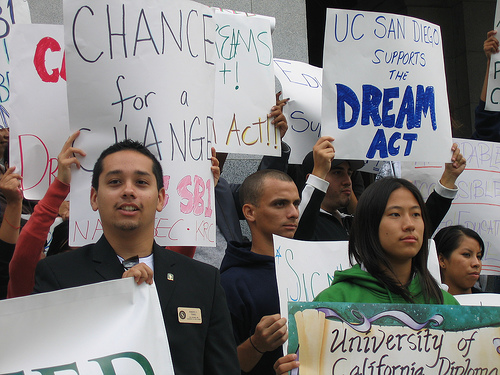According to a new report released by the Immigration Policy Center, as many as 1.4 million immigrants currently living in the United States may meet the requirements of the Obama Administration’s “deferred action” initiative for unauthorized youth.
 Who and Where the DREAMers Are: A Demographic Profile of Immigrants Who Might Benefit from the Obama Administration’s Deferred Action Initiative states that about 936,930 immigrants between the ages of 15 to 30 may immediately fulfill the requirements for the initiative, constituting 69 percent of all potential beneficiaries of the recently announced program.
Who and Where the DREAMers Are: A Demographic Profile of Immigrants Who Might Benefit from the Obama Administration’s Deferred Action Initiative states that about 936,930 immigrants between the ages of 15 to 30 may immediately fulfill the requirements for the initiative, constituting 69 percent of all potential beneficiaries of the recently announced program.
The report also states that about 426,330 immigrants between the ages of 5 to 14 may also meet the program requirements in the future, pending the initiative remains unchanged. The population comprises approximately 31 percent of all possible potential beneficiaries under the program.
The analysis also provides new demographic information regarding the nation’s unauthorized immigrant youth population. The report states that almost 68 percent of potential beneficiaries of the “deferred action” initiative are Mexican, while an additional 13 percent are from other countries in North and Central America, as well as the Caribbean. Eight percent of potential beneficiaries are originally from Asia, 7 percent hail from South America and 2 percent are European-born.
Analysts state that California, Texas, Florida, New York and Illinois have the largest populations of undocumented youth. The report said that the states with the highest number of Mexican-born potential beneficiaries are California, Texas, Illinois, Arizona and Georgia, which combined, have a potential beneficiary population of more than 650,000 youths.
Homeland Security Secretary Janet Napolitano announced the initiative last month. The program grants a renewable, two-year reprieve for certain unauthorized immigrants who may be facing deportation, pending they meet certain criteria.
Those eligible must be under the age of 31, entered the United States prior to turning 16 and have been in the country continuously for a minimum of five years.
Additionally, beneficiaries may not have been convicted of a felony or significant misdemeanors, and must be in school, have a high school diploma or earned a GED, or served in the United States military.
Photo from Cornell University.





























